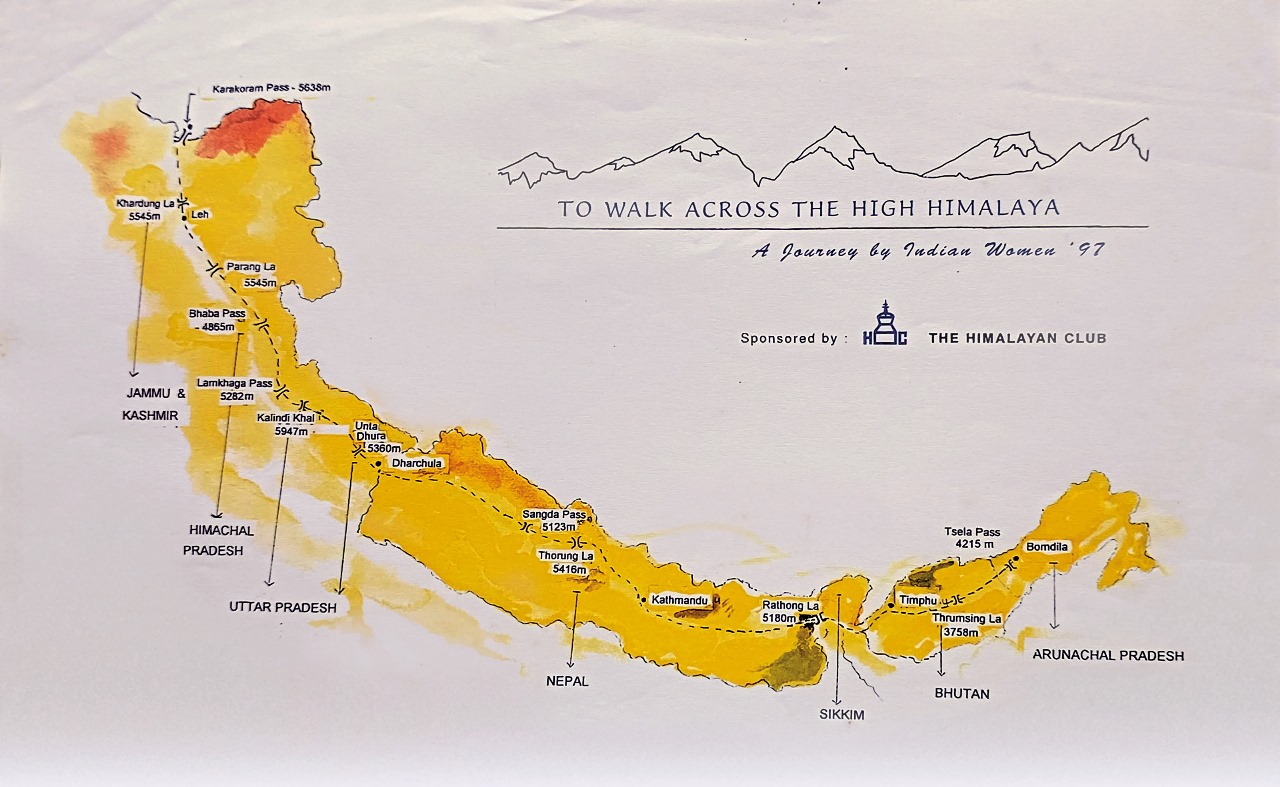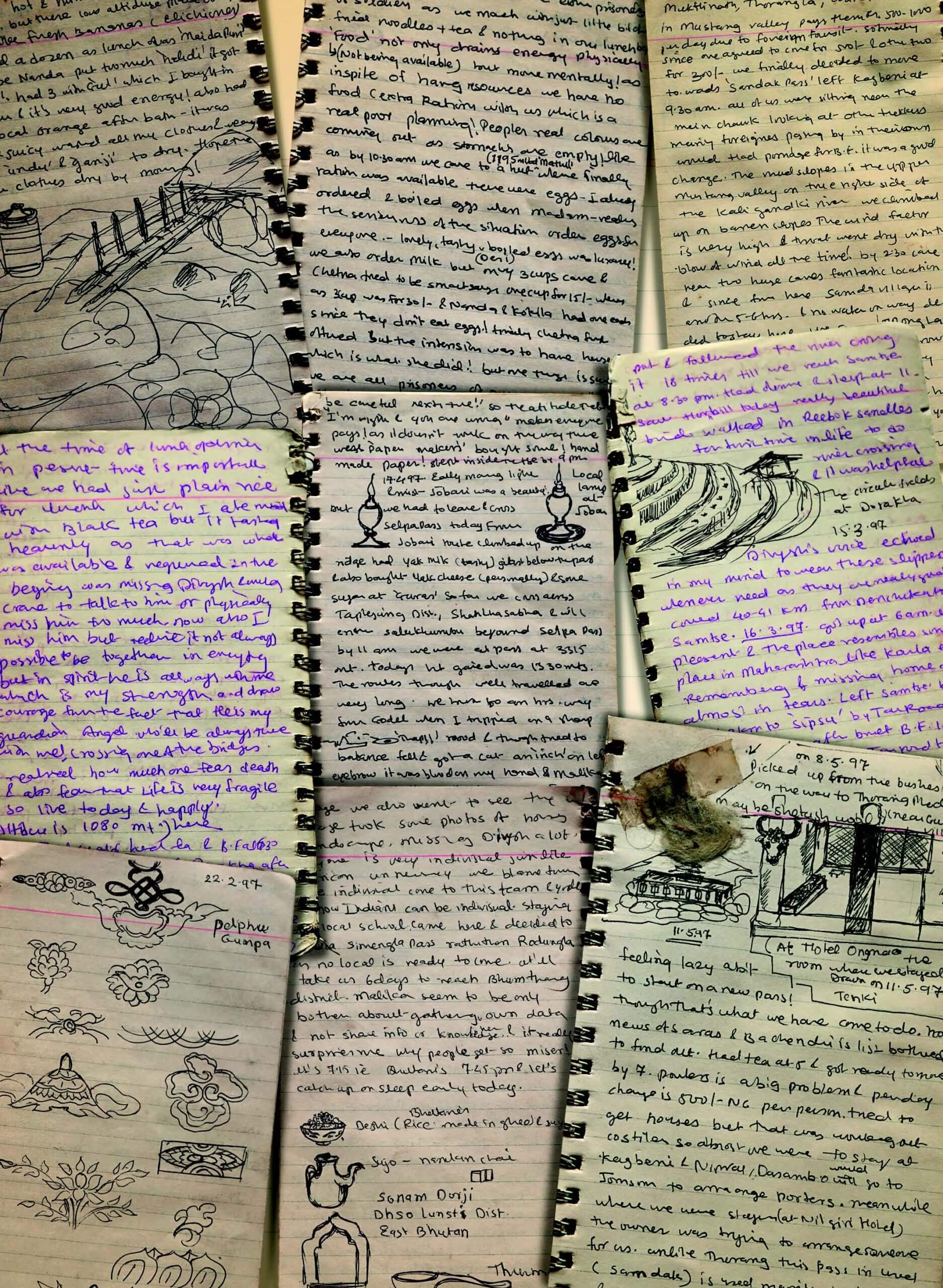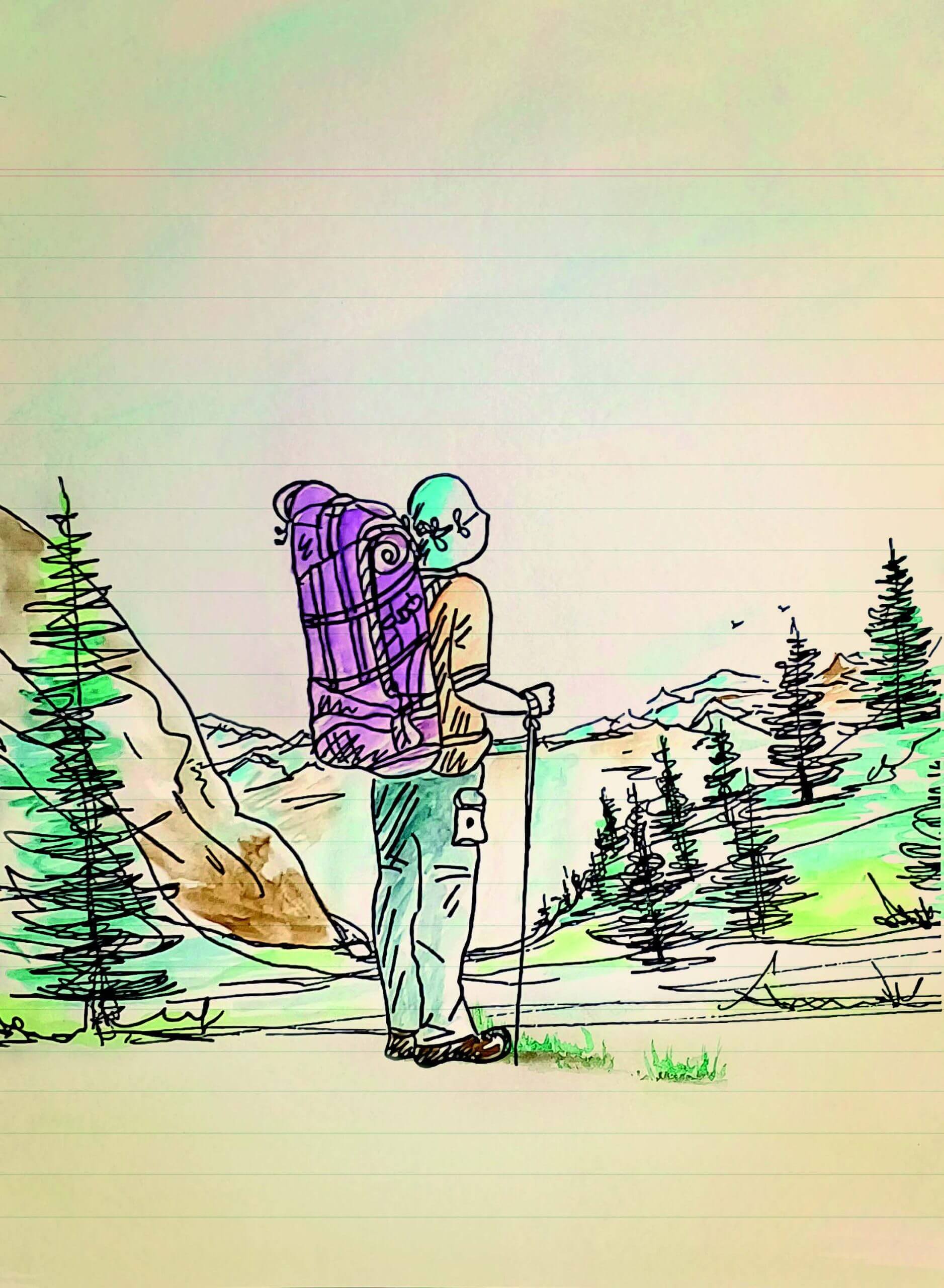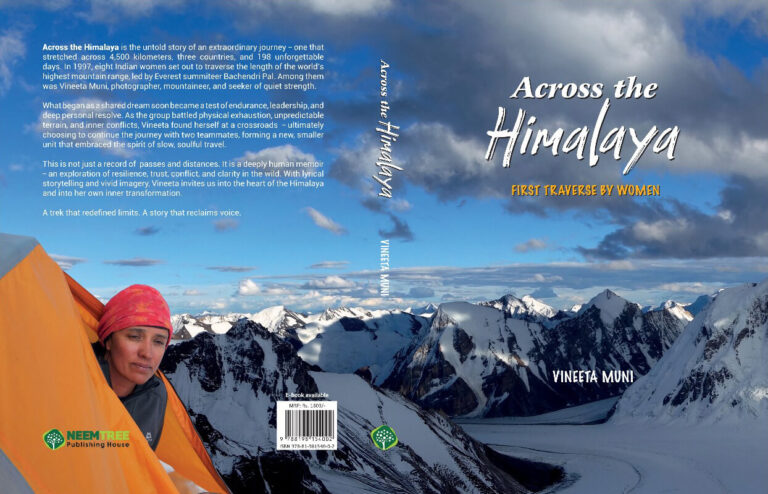Across the Himalaya
First Traverse by Women
Author: Vineeta Muni
Publisher: Neem Tree Publishing House, 1st Edition, June 2025
Pages: 282
Sketches: Colour and B and W: 38
Photographs: Colour 84
Maps: 19
Journeys, proverbially, begin with a single step. This adage, though clichéd, warrants repetition when one considers the journey to be 4,500 kms long, over 198 days and across three countries.
That is a lot of steps ; uphill and down dale , across steaming plains and slushy forests, over rock, ice and snow, over 42 wind-swept passes and frigid rivers across the length of the Himalayas. It is a story worth telling, more so, because these are the first women to have done so, and that it has been incubating long enough since 1997.
Vineeta Muni did keep a diligent journal to flesh out her insightful photography, as she hand-holds the reader through a linear narrative, which begins at Bomdilla in Arunachal Pradesh, the eastern most state of India, on 4th Feb. 1997, crosses Bhutan and Nepal, and ends on 20th Aug.1997 at the Karakoram Pass, in the Western limits of the Indian Himalayas. Undoubtedly ambitious, a similar trek, once done earlier by the team of Chewang Tashi, Peter Hillary and Graham Dingle, had never been attempted by women.

Bachendri Pal, first Indian woman to have summited Everest, led this team of eight women, who were selected by her from across the country. What should have been a benchmark adventure of discovery at many levels, not the least of one’s own self, came apart at the seams. After 124 days Vineeta with Sumita Roy and Malika Virdi left the team, but carried on to complete the rest of the journey on their own, a testament to their commitment and determination.
Vineeta’s story is narrated with empathy and simplicity, devoid of linguistic callisthenics, which Nandini Purandare aptly recognises as naive, a trait so welcome but sadly rare. Her joys and sorrows, her pains and pleasures are visceral and she pens them with stark brevity. A long journey over difficult terrain and in uncertain weather has its own challenges, which demands physical and mental resilience. It can only be made bearable, if not enjoyable, by a sense of equanimity and shared emotions amongst members. The camaraderie that should have been mandatory was woefully absent. The leader who should have fostered an inclusiveness proved to be “autocratic and threatening, encroaching on private spaces”. A demanding trek that would be a severe test of endurance needed more cohesiveness, sans suspicions, and a more participatory decision making, rather than being one where subalterns are expected to just follow orders emanating from the top. Sometimes they were even unaware of the next day’s target destination.
Considering that the Tatas were underwriting this project, it comes as a big surprise that the members were often left famished on a starvation diet, losing weight drastically, suffering from malnutrition and even missing their periods. Someone, obviously, had blundered.


Vineeta’s narrative runs on two parallel planes. A communal one, where she as a team member suffers or exults with the rest, and another individual one where she bares her emotions, her ethos and expectations and her struggles with the suffocating demotivating circumstances. The book proves interesting at both planes, and Vineeta keeps it simple. Her descriptions of the terrain and her struggles with it and the joy it gives her, are as succinct and candid as are the interactions she has with everyone she meets. Possibly the passage of years between the happening and the telling of it, or Nandini’s editorial “filters”, or both, has proved to be the “rope” preventing the book from sliding off into a crevasse of acrimonious accusations and bitter recrimination. That would have been a pity, a bright tale turning dark.
Like the beautiful butterfly, that so significantly turns up between chapters, with a small status report of its developmental milestones, Vineeta’s story, albeit her very journey, both physical and emotional, bursts forth from the constructive confines of the pupa and flutters off to the freedom she yearned for even as a larva.
An engrossing read for both the high altitude enthusiast and the armchair traveller alike, this book is an attractive production lavishly illustrated with excellent maps, photographs and the author’s sketches and the publishers too deserve a big hand, for like Vineeta’s, it’s a job well done.

Reviewed by Dr. Rupak Bhattacharya (rupakb55@gmail.com), A doctor by profession, a mountaineering fan, and has often written for Dream Wanderlust.
Images are for reference only.Images and contents gathered automatic from google or 3rd party sources.All rights on the images and contents are with their legal original owners.

